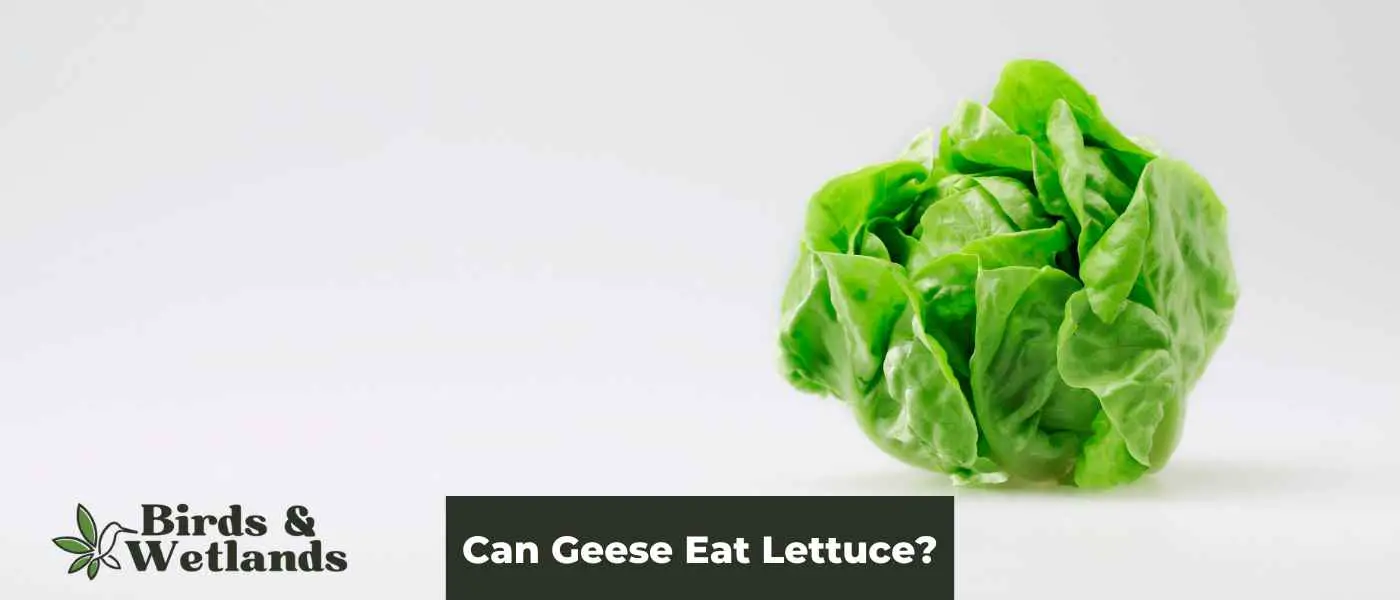Geese are omnivorous, which means they eat both plants and animals. These waterfowl typically eat grasses, grains, and insects in the wild and captivity. But can geese eat lettuce?
The answer is yes, they also eat lettuce. Geese can benefit from lettuce because it is an easy-to-digest source of nutrients. Furthermore, some varieties of lettuce have a bitter taste, making them a favorite food for these animals.
So, there is no reason why geese cannot eat lettuce in their diet.
Key Points on Can Geese Eat Lettuce
- Young and adult geese can eat lettuce. Lettuce has plenty of nutritional value and is a good source of nutrients, vitamins and minerals.
- Lettuce is easy to digest food. Serve it chopped up or shredded to prevent choking.
- Despite its bitter taste, geese like to eat lettuce.
- Iceberg lettuce is less nutritious than other types of lettuce, such as Romaine. However, the iceberg is perfectly safe for geese to consume.
Can you feed Canadian geese lettuce?
Canada geese love fresh greens and feeding them lettuce is a great way to provide them with a healthy diet.
You can either feed them whole leaves or chopped-up lettuce. If you’re feeding adult geese chopped-up lettuce, make sure to chop it into small pieces so they can easily eat it. You can also mix the lettuce with other fresh greens.
Remember, to always wash your hands before and after handling the food when you feed wild geese. This will help to prevent the spread of disease.
Avoid giving geese bread, lettuce is a healthier choice.
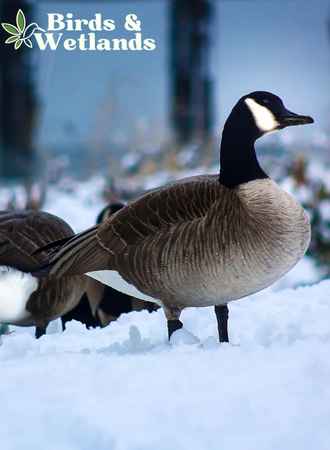
Can domestic geese eat iceberg lettuce?
Domestic geese can eat iceberg lettuce, but it is debatable whether it’s the best option for them. Iceberg lettuce is less nutritious than other types of lettuce, such as Romaine.
Romaine is a good choice to provide your geese with a healthy meal. However, iceberg lettuce is perfectly safe for geese to eat, and they will certainly enjoy it.
The best lettuce for geese is dark, leafy greens such as romaine lettuce or red leaf lettuce. These types of lettuce are high in nutrients and provide a good source of vitamins and minerals for geese. It’s important to avoid iceberg lettuce as it has limited nutritional value and is mostly composed of water.
Can geese eat cooked lettuce?
Yes, you can serve cooked lettuce to your geese. However, it’s important to ensure that the lettuce doesn’t contain any salt or other seasonings, as these can harm geese.
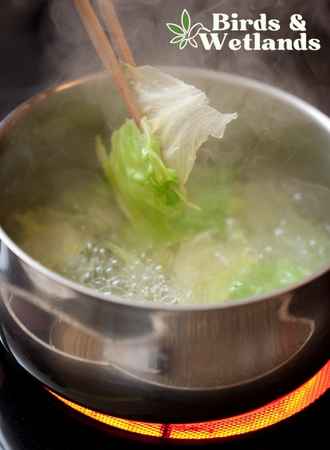
Can baby geese eat lettuce?
If you plan to supplement your geese’s diet with veggies, chopped-up lettuce is a good option. In fact, lettuce makes a healthy treat for young goslings. Lettuce is low in calories and fat, and it’s a good source of fiber.
Make sure your young goslings are getting enough niacin from other food sources, as a lack of this vitamin can lead to leg problems such as bow-leggedness.
Besides meeting their nutritional needs, it is also important that your baby geese have access to fresh drinking water.
What are the nutritional benefits of feeding geese lettuce?
Grass and other plant materials contain all the essential nutrients, vitamins and minerals geese need for a well-balanced diet.
Antioxidants
Antioxidants are beneficial to geese in several ways. Antioxidants protect their cells from free radicals, unstable molecules that can damage cells. Free radicals are produced when the body breaks down food or is exposed to certain environmental toxins.
In addition, antioxidants have been shown to boost the immune system, reduce inflammation, and protect against chronic diseases such as heart disease, which is pretty common among domestic birds.
Vitamin C
Just like humans, geese require vitamin C to stay healthy. This essential nutrient helps the body absorb and store iron and plays an important role in healing. Furthermore, it strengthens the immune system, assisting the body in fighting infection.
Geese typically get this vitamin from green plants, but they may also get it from supplements or other sources.
| Nutrient | Amount per 100 g | Benefit for Geese |
|---|---|---|
| Vitamin A | 11% of the daily value (DV) | Supports good vision and eye health, as well as the health of the skin and feathers |
| Vitamin K | 63% of the DV | Helps with blood clotting and proper bone health |
| Folate | 5% of the DV | Supports proper cell growth and development |
| Fiber | 1g | Supports healthy digestion and helps regulate bowel movements |
| Potassium | 2% of the DV | Helps regulate fluid balance and supports proper heart and muscle function |
It’s important to note that the nutritional content of lettuce can vary depending on growing conditions and the variety of lettuce. Additionally, this table only provides a general idea of the nutrient content of lettuce and is not meant to replace veterinary advice for determining the best diet for your pet goose.
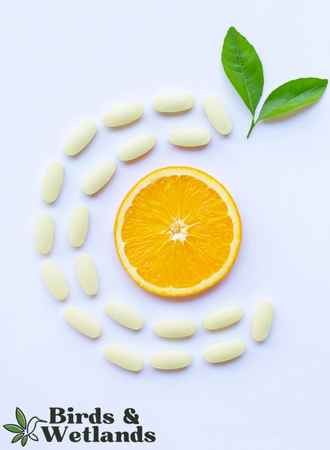
Vitamin A
One of the many obvious benefits of vitamin A is that it promotes better vision. This is especially important for geese, which must be able to see clearly to avoid predators.
Vitamin A also helps to strengthen the immune system, which is essential for keeping geese healthy and disease-free. Furthermore, vitamin A promotes proper growth and development, which is essential for all animals, including geese. Vitamin A also aids in the proper functioning of the heart, lungs, and other organs.
Vitamin K
Vitamin K is required for healthy blood clotting and bone growth. People who do not get enough vitamin K can develop bruising and bleeding problems. Similarly, geese benefit from vitamin K. Vitamin K aids in the prevention of fatal excessive bleeding in geese.
Furthermore, vitamin K aids in the development of strong bones in geese. This is especially important for young geese, which require a lot of vitamin K to grow strong and healthy.
Potassium
Potassium is a mineral that benefits geese in several ways. It aids in the maintenance of normal fluid levels within the cells. This is required for normal blood pressure and muscle contraction. Potassium also helps the nervous system function and prevents cramping and fatigue.
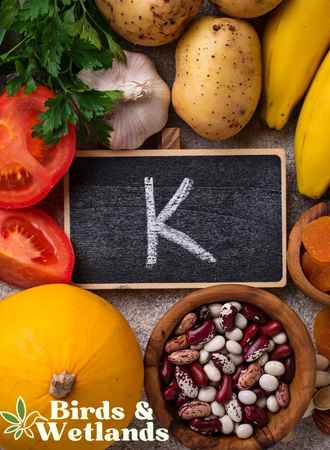
Carbohydrates
Carbohydrates are an essential component of a goose’s regular food. They supply glucose to the body, convert it into energy and are used to support bodily functions and physical activity. Geese use carbohydrates for short bursts of energy, such as grazing or swimming during the winter.
They also store carbohydrates in the form of glycogen in their liver and muscles, which are broken down and used for energy when needed.
Can you Feed Too Much Lettuce?
Feeding too much lettuce to geese can lead to several potential health problems, including:
- Digestive Issues: Overconsumption of lettuce can lead to digestive issues such as diarrhea and bloating, which can be uncomfortable for geese.
- Nutrient Imbalance: While lettuce does provide some nutrients, it is not a complete source of nutrition for geese. Feeding too much lettuce can lead to a nutrient imbalance and potentially cause health problems.
- Risk of Contamination: Lettuce is commonly exposed to contaminants such as pesticides and bacteria during growing, harvesting, and transportation. Feeding too much contaminated lettuce to geese can lead to health problems.
- Increased Risk of Vitamin A Toxicity: Lettuce is a good source of vitamin A, but consuming too much of this vitamin can lead to toxicity and cause health problems.
Therefore, it’s important to feed lettuce in moderation as part of a balanced diet and not as the only food option offered to geese. It’s always best to consult with a veterinarian or avian specialist to determine the best diet for your pet goose.
Which lettuce is the best choice for geese?
The most nutritious type of lettuce for geese is bibb lettuce, also known as Boston lettuce. It has more folate, iron, and potassium in its leaves than other types of lettuce. Folate is necessary for cell growth and development, whereas iron aids in the transport of oxygen in the blood. Potassium is an electrolyte that aids in the maintenance of fluid balance in the body.
Romaine lettuce, which contains more fiber, vitamins, and minerals than iceberg lettuce, is another good choice for geese. However, because it is nearly 95% water, iceberg lettuce is still a good source of hydration for geese, especially during the summer months.
Bibb or romaine lettuce are both nutritionally dense and high in water content, making them excellent choices for geese.
How to serve and prepare lettuce for your geese?
Lettuce is high in vitamins and minerals for your geese, but it must be properly prepared before feeding it to them. There are a few different ways to serve lettuce. Serving geese with finely chopped or shredded lettuce prevents choking and makes it easy on the digestive system.
Moreover, it would be best always to serve fresh lettuce to your geese.
Older leaves can be tough and difficult for geese to digest. Additionally, when feeding lettuce to your geese, always keep an eye on them to ensure they don’t eat too much at once.
Once your geese are done eating, remove any uneaten lettuce from the feeding areas to provide your geese with a safe environment. Moldy food attracts rodents and can cause serious damage to your geese’s health.
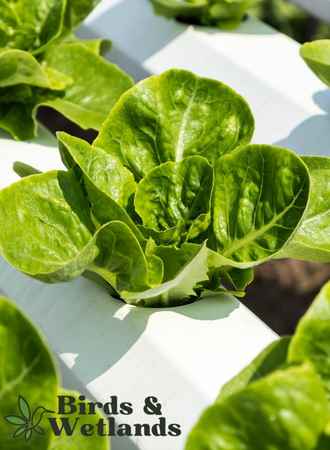
How often should your geese eat lettuce?
While lettuce is certainly nutritious, it should only be served to your goose on rare occasions. Geese enjoy trying new flavors and textures, so providing a variety of fruits and veggies is an excellent way to keep them healthy and happy.
Give your goose a small piece of lettuce once or twice a week. Any more than that, and they may develop digestive issues.
Lettuce is also low in calories, so it’s important to ensure your goose is getting enough other food sources to stay healthy. Lettuce can help your geese lead happy and healthy lives when offered in moderation.
What other foods can you mix lettuce with?
Unlike ducks, geese eat a lot of greens. These birds enjoy lettuce, and for a good reason. Eating it has several benefits, including freshness, nutrition, and low-calorie count. But what other foods can you mix with lettuce to give your geese a healthy diet?
Several other options include fresh grass and sunflower seeds. Fresh grass is a good source of fiber, vitamins, and minerals, while seeds are rich in protein and fat.
You can also mix lettuce with cracked corn and wheat which are packed with carbohydrates. Geese require carbohydrates to keep them active and energized (but do not feed them bread as the carbohydrate).
Consider leafy greens such as kale, Swiss chard and spinach for the diet of your flock. These leafy vegetables are rich in nutrients and fiber, both essential for geese’s health. However, offer Swiss chard and spinach in moderation because they contain high amounts of oxalic acid.
Remember to include fruits and vegetables to round up your goose’s diet. Your geese will benefit from a range of vitamins, minerals, and antioxidants provided by these healthy treats. Choose fruits and vegetables that are fresh, colorful, and pesticide-free to feed your geese with. We recommend bananas, apples, blackberries and even kiwis.

